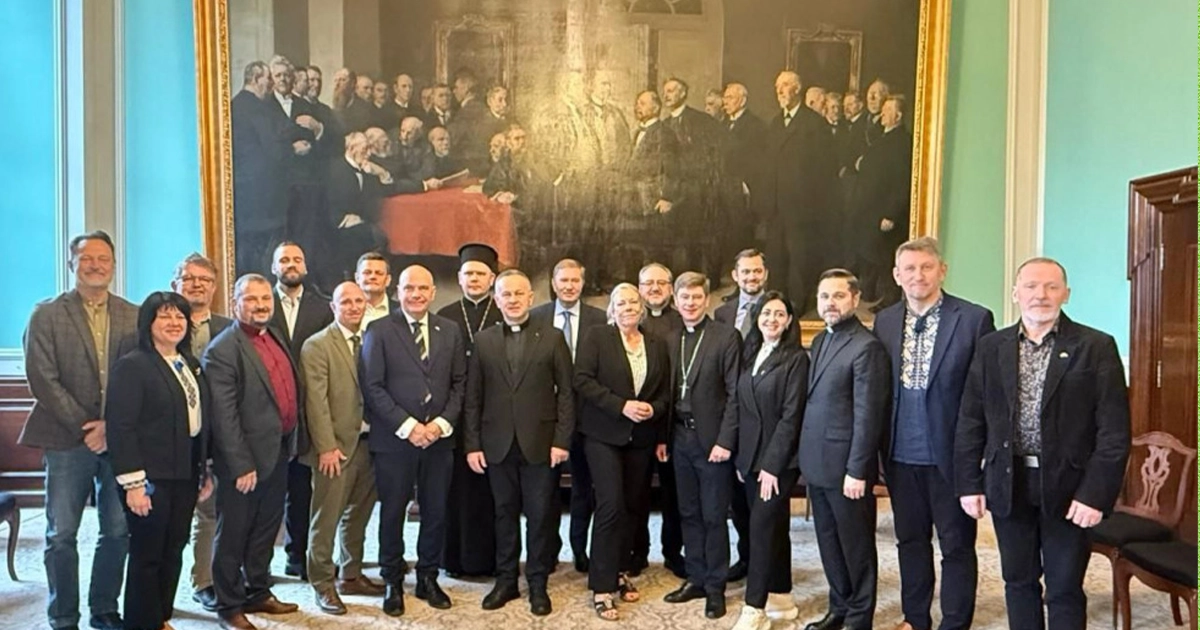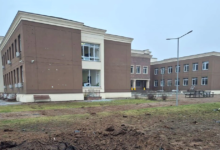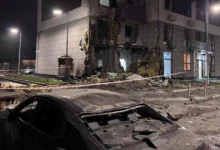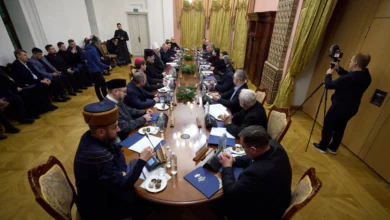The delegation of the All-Ukrainian Council of Churches and Religious Organizations concluded its visit to Denmark with a prayer in Parliament and an appeal to MPs.

On May 28, 2025, the official visit of the delegation of the All-Ukrainian Council of Churches and Religious Organizations (UCCRO) to Copenhagen came to an end. The last item on the agenda was participation in morning prayers and hearings in the Danish parliament, the Folketing, with the participation of the speaker, deputies, public and religious figures.
Source: UCCRO
The prayer service was opened by Pastor Anatoliy Raichynets (Ukrainian Bible Society), who, referring to Jeremiah 29:11–13, spoke about the ministry of churches in wartime and called for prayers for a just peace for Ukraine. After the speech, the Lord’s Prayer and the spiritual hymn “Amazing Grace” were sung.
After the prayer, the chairman of the UCCRO, Bishop Valery Antoniuk, presented Speaker Søren Gade with a symbolic gift—a painting made on boards from ammunition boxes. It depicts Jesus Christ in prayer against the backdrop of destroyed Ukrainian cities with the words from John 17:15: “I do not ask that you take them out of the world, but that you keep them from the evil one.”
At the parliamentary hearings, which opened with the prayer-song “Let My Prayer Flow,” Bishop Valery Antoniuk (All-Ukrainian Union of Churches of Evangelical Christians-Baptists), Bishop Vitaly Kryvytsky (Roman Catholic Church), Alexander Zayets (Institute for Spiritual Renewal), and Victoria Raichynets (Institute for Trauma Healing) spoke. They told parliamentarians about Russian aggression, the role of Ukrainian churches in spiritual and humanitarian service, religious persecution in the occupied territories, and the importance of defense assistance to protect life.
The UCCRO delegation visited Denmark on May 26–28 at the invitation of the National Council of Churches in Denmark. The program of the visit included participation in the international conference “When the Time Comes,” meetings with the Danish Ministry of Foreign Affairs and religious organizations, and the signing of a joint declaration of solidarity.
The delegation included: Bishop Valery Antoniuk, Bishop Vitaly Kryvitsky, Mitred Archpriest Oleksa Petriv, Bishop Stanislav Nosov, Pastor Anatoly Raichinets, Priest Sergey Berezhnoy, Alexander Zayets, and representatives of the Institute for Trauma Healing—Victoria Raichinets and Elena Nosova.








